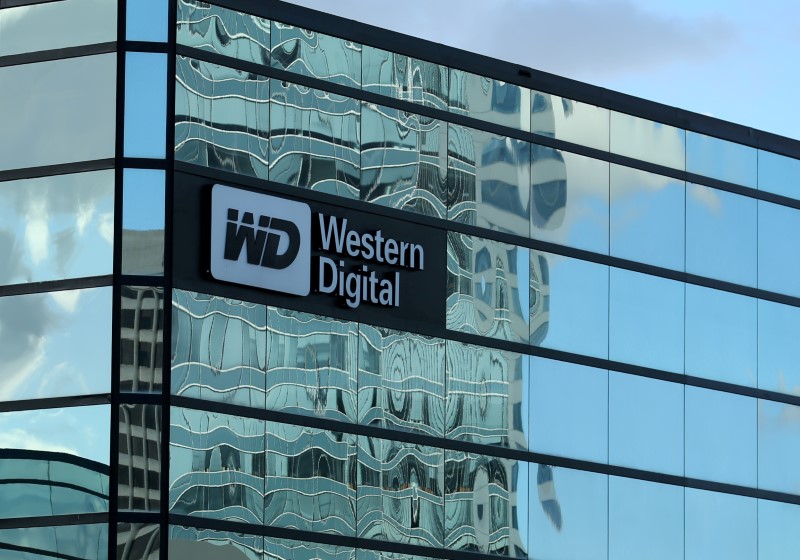Investing
Western Digital’s first-quarter forecast disappoints as weak cloud demand weighs

© Reuters. FILE PHOTO: Western Digital hard drives are shown for sale at an Office Depot Inc store in Encinitas, California, U.S., May 8, 2017. REUTERS/Mike Blake/File Photo
(Reuters) – Memory chipmaker Western Digital Corp (NASDAQ:) forecast first-quarter revenue below Wall Street targets and a bigger-than-expected loss on Monday as weak demand, particularly for its cloud business, forces it to cut production.
The company said it expects its current-quarter loss to include a charge of about $200 million to $220 million for underutilization of its factories.
Western Digital forecast its adjusted loss per share to be in the range of $2.10 to $1.80, compared to an estimated loss of $1.40 per share. It also forecast revenue for the same period below estimates.
Excess inventory clearance in the cloud category will continue for a “couple of quarters”, its finance chief Wissam Jabre said in June. Cloud revenue fell 53%, to $994 million, in the quarter ended June 30.
Rival Seagate Technology also forecast downbeat revenue for its first quarter last week, on weakness in major market China and lower tech spending.
Shares of Western Digital fell 2.4% in trading after the bell.
Cutting production – something memory chipmakers did in the first half this year as demand slumped – is a sign that companies are trying to restore order to a supply-glut-ridden industry.
While this has caused steep writedowns in the value of unsold stockpiles and hurt profits, it has also helped stabilize the market.
“Our two largest end-markets, client and consumer, are returning to growth, inventories are normalizing, content per unit is increasing and price declines have been moderating,” said Western Digital’s CEO David Goeckeler, mirroring statements by memory-chip industry giants like South Korea’s Samsung Electronics (OTC:) and SK Hynix that the worst was behind the industry.
Western Digital, which makes hard drives for computers and memory cards, is also exploring strategic alternatives for its business, including a merger with its Japanese joint venture partner, Kioxia Holdings, according to media reports.
(This story has been corrected to say loss, not profit, in paragraphs 1 and 2)
Read the full article here

-

 Investing4 days ago
Investing4 days agoThis All-Access Pass to Learning Is Now $20 for Black Friday
-

 Passive Income4 days ago
Passive Income4 days agoHow to Create a Routine That Balances Rest and Business Success
-

 Side Hustles5 days ago
Side Hustles5 days agoApple Prepares a New AI-Powered Siri to Compete With ChatGPT
-

 Side Hustles2 days ago
Side Hustles2 days agoA Macy’s Employee Made Accounting Errors Worth $132 Million
-

 Passive Income5 days ago
Passive Income5 days agoCustomers Want More Than Just a Product — Here’s How to Keep Up
-

 Side Hustles6 days ago
Side Hustles6 days agoMIT Gives Free Tuition For Families Earning $200,000 or Less
-

 Side Hustles4 days ago
Side Hustles4 days agoGift the Power of Language Learning with This Limited-Time Price on Babbel
-

 Investing1 day ago
Investing1 day agoFactbox-How Trump can overhaul US financial regulators when he takes office By Reuters


















